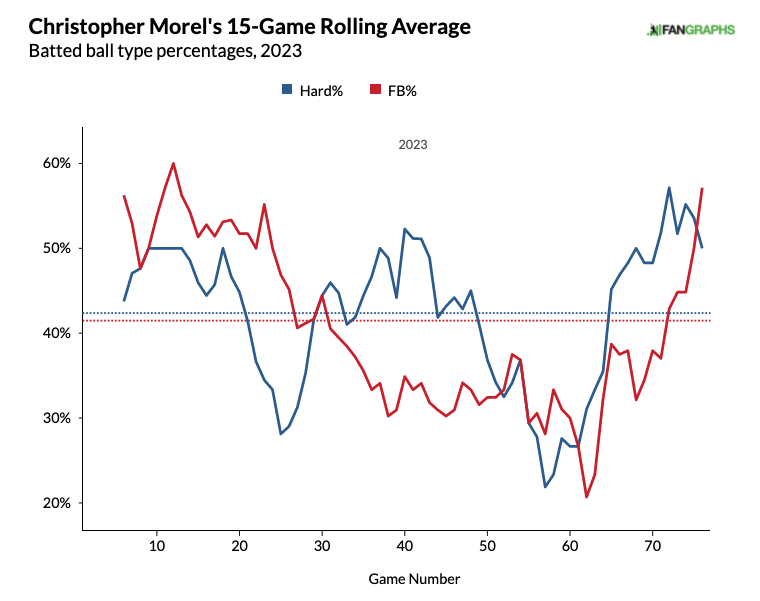The Slowdown Of A Major Ocean Current System And Its Effect On US Coastal Flooding

Table of Contents
Understanding the Atlantic Meridional Overturning Circulation (AMOC)
What is AMOC?
The Atlantic Meridional Overturning Circulation (AMOC) is a vast system of ocean currents that acts like a giant conveyor belt, transporting warm water from the tropics northward towards the North Atlantic and returning colder water southward. This thermohaline circulation plays a crucial role in regulating global climate, influencing regional weather patterns, particularly in the North Atlantic region. The AMOC is a key driver of the Gulf Stream, which significantly moderates temperatures in Western Europe and North America.
- Circulation Pattern: Warm, salty water flows northward along the surface, releasing heat to the atmosphere. As it reaches higher latitudes, it cools and becomes denser, sinking and flowing southward at depth.
- Influence on Weather: The AMOC influences regional temperatures and precipitation patterns. A robust AMOC contributes to milder winters and warmer summers in many areas.
- Potential Shutdown Consequences: While a complete AMOC shutdown is a hypothetical scenario, the potential consequences are severe and include dramatic temperature shifts in the North Atlantic, altered precipitation patterns, and significant sea level rise along the eastern coast of North America.
Evidence of AMOC Slowdown and its Potential Causes
Scientific Findings
Recent scientific studies and observations suggest a concerning slowdown of the AMOC. These findings, while still under investigation, point toward a potential crisis. Multiple research papers have utilized various methodologies, including analyzing ocean temperature and salinity data, to ascertain this trend.
- Specific Studies: Studies published in leading scientific journals have indicated a weakening of the AMOC in recent decades, potentially reaching its weakest point in over a millennium. These studies use long-term data sets to establish trends and patterns.
- Potential Causes: The leading potential causes for the AMOC slowdown are closely linked to climate change. Melting glaciers and ice sheets in Greenland and other arctic regions contribute to increased freshwater input into the North Atlantic. This freshwater influx reduces the density of surface waters, hindering the sinking process that drives the AMOC.
- Uncertainty and Further Research: While the evidence points toward a slowdown, there remains uncertainty about the exact rate of weakening and the potential tipping points. More research is crucial to refine our understanding and improve predictive capabilities.
The Link Between AMOC Slowdown and Increased US Coastal Flooding
Mechanisms of Impact
A weaker AMOC can contribute to increased sea level rise and coastal flooding along the US East Coast through several mechanisms.
- Sea Level Rise: A slowdown in the AMOC can lead to a redistribution of water mass, potentially causing a regional increase in sea level along the eastern seaboard.
- Impact on Storm Surge: A weaker AMOC could affect atmospheric circulation patterns, potentially leading to more intense storm surges during hurricanes and other extreme weather events. The combined effect of higher sea levels and stronger storm surges exacerbates coastal flooding.
- High Tide Flooding: Even without major storms, a higher baseline sea level makes high tide flooding more frequent and severe, impacting coastal communities and infrastructure. Other factors, such as land subsidence and storm intensification, further compound the problem.
Mitigation and Adaptation Strategies
Addressing the Root Causes
Mitigating climate change is essential to slow or reverse the AMOC slowdown. This requires a global effort focusing on reducing greenhouse gas emissions.
Preparing for Increased Flooding
Adaptation strategies are crucial for coastal communities to reduce the impact of increased flooding:
- Reduce Greenhouse Gas Emissions: Transitioning to renewable energy sources, improving energy efficiency, and implementing sustainable land use practices are critical steps.
- Invest in Coastal Defenses: Constructing sea walls, improving drainage systems, and restoring coastal wetlands can help protect against flooding.
- Early Warning Systems: Developing and implementing robust early warning systems for flooding can save lives and reduce property damage.
- Building Codes: Implementing stricter building codes in coastal areas to ensure structures are more resilient to flooding is vital.
- Managed Retreat: In some highly vulnerable areas, planned relocation (managed retreat) might be necessary.
Conclusion
The slowdown of a major ocean current system, specifically the AMOC, is strongly linked to increased US coastal flooding. This concerning trend underscores the urgent need to address climate change and its cascading effects on vulnerable coastal communities. Understanding the intricate relationship between the AMOC, sea level rise, and increased flooding is crucial for developing effective mitigation and adaptation strategies. Learn more about the AMOC and advocate for policies that address climate change to protect our coastal communities and build a more sustainable future. Ignoring the slowdown of this major ocean current system and its impacts will only lead to more devastating consequences for coastal regions.

Featured Posts
-
 The Bin Laden Tapes Netflix Series Focuses On A Decisive Phone Call
May 18, 2025
The Bin Laden Tapes Netflix Series Focuses On A Decisive Phone Call
May 18, 2025 -
 The Gops Medicaid Fight Internal Conflict And Consequences
May 18, 2025
The Gops Medicaid Fight Internal Conflict And Consequences
May 18, 2025 -
 Reddit Down Thousands Of Users Affected Worldwide
May 18, 2025
Reddit Down Thousands Of Users Affected Worldwide
May 18, 2025 -
 Worldwide Reddit Outage Thousands Of Users Report Issues
May 18, 2025
Worldwide Reddit Outage Thousands Of Users Report Issues
May 18, 2025 -
 Ben Joyce And Kenley Jansen A Masterclass In Relief Pitching
May 18, 2025
Ben Joyce And Kenley Jansen A Masterclass In Relief Pitching
May 18, 2025
Latest Posts
-
 Mlb Home Run Prop Predictions May 8th Game Analysis And Betting Odds
May 18, 2025
Mlb Home Run Prop Predictions May 8th Game Analysis And Betting Odds
May 18, 2025 -
 Winning Mlb Home Run Props Today May 8th Schwarbers Power Potential
May 18, 2025
Winning Mlb Home Run Props Today May 8th Schwarbers Power Potential
May 18, 2025 -
 Todays Mlb Home Run Props Focusing On Kyle Schwarbers Odds May 8th
May 18, 2025
Todays Mlb Home Run Props Focusing On Kyle Schwarbers Odds May 8th
May 18, 2025 -
 Mlb Baseball Home Run Prop Bets And Expert Picks For Games On May 8th
May 18, 2025
Mlb Baseball Home Run Prop Bets And Expert Picks For Games On May 8th
May 18, 2025 -
 Kyle Schwarber Home Run Prop Mlb Odds And Predictions For May 8th
May 18, 2025
Kyle Schwarber Home Run Prop Mlb Odds And Predictions For May 8th
May 18, 2025
